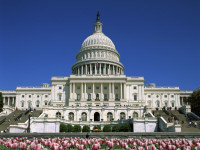TFI: Watching Capitol Hill Developments

Both the House and Senate Agriculture Committees have announced plans to start the rewrite of the Farm Bill this spring. This comes after a great deal of time and effort was put into a joint recommendation to the Super Committee that would have reformed much of the Farm Bill’s commodity title, reduced funding for conservation and produced savings of $23 billion over 10 years. By way of comparison, President Barack Obama’s 2011 budget recommended agriculture cuts in the order of $33 billion over the next 10 years and House Budget Committee Chair Paul Ryan has advocated cuts in excess of $48 billion.
Since the Super Committee failed in its efforts to reach agreement on overall spending cuts, the Agriculture Committees’ recommendation is set aside for the time being but will likely serve as the starting point for further Farm Bill debate.
Some policy specifics that were put forth in the recommendation include $14 billion be cut from commodity programs, roughly 24% from the current baseline. This will include the end of Direct Payments, the $5 billion in annual subsidies paid to growers based on historic production and not tied to current prices or production. Conservation programs could face a $6.5 billion reduction, or a 10% decrease. Cuts to nutrition programs like food stamps could produce roughly $5 billion in savings, a less than 1% decrease.
Some of the savings generated by these cuts will be used to improve and add to the existing crop insurance program or a revenue guarantee program. There are several proposals being floated by farm state Senators, commodity groups and farmer organizations. Hearings this spring will allow for a more robust debate of these proposals and input from rank and file committee members.
Water Concerns
Florida and the Chesapeake Bay — two sides of the same coin: The Clean Water Act (CWA) requires states to establish criteria by which to judge or measure whether water quality in a particular water body or water way is meeting the goals set by the state for them. These criteria can be narrative, and therefore relying more on professional judgment, (relying on a set of biological/ecological indicators; which may demonstrate that while a water body is over a strict numeric limit, it still supports a healthy and diverse ecosystem) or they can be numeric, a hard and fast number. The environmental community contends the CWA requires these criteria to be numeric. EPA tends to agree with them. State regulators and the regulated community generally do not read the CWA in that way. The Fertilizer Institute (TFI), the Agricultural Retailers Association and several other agriculture organizations and the broader regulated community have filed suit against EPA on this issue. On a parallel track, EPA and the state of Florida’s Department of Environmental Protection are in negotiations concerning the rule. At this date, it is unclear what, if any outcome will result from these discussions.
In the Chesapeake Bay watershed, EPA is attempting to mandate the implementation of total maximum daily load (TMDL) rules to be implemented by the six states and the District of Columbia in the Bay watershed. TMDLs consist of “pollutant budgets” for a specific water body that, when implemented would presumably attain water quality standards. States are required to submit Watershed Implementation Plans (WIPs) and EPA is currently reviewing the Phase 2 WIPs and can disapprove them and then cut off federal funding (although these issues are in play in the American Farm Bureau v. EPA lawsuit on this topic). TFI has joined the American Farm Bureau Federation and others in filing a legal challenge to this rule on the basis that the Clean Water Act does not provide the Agency with authority to implement TMDLs in this manner.






